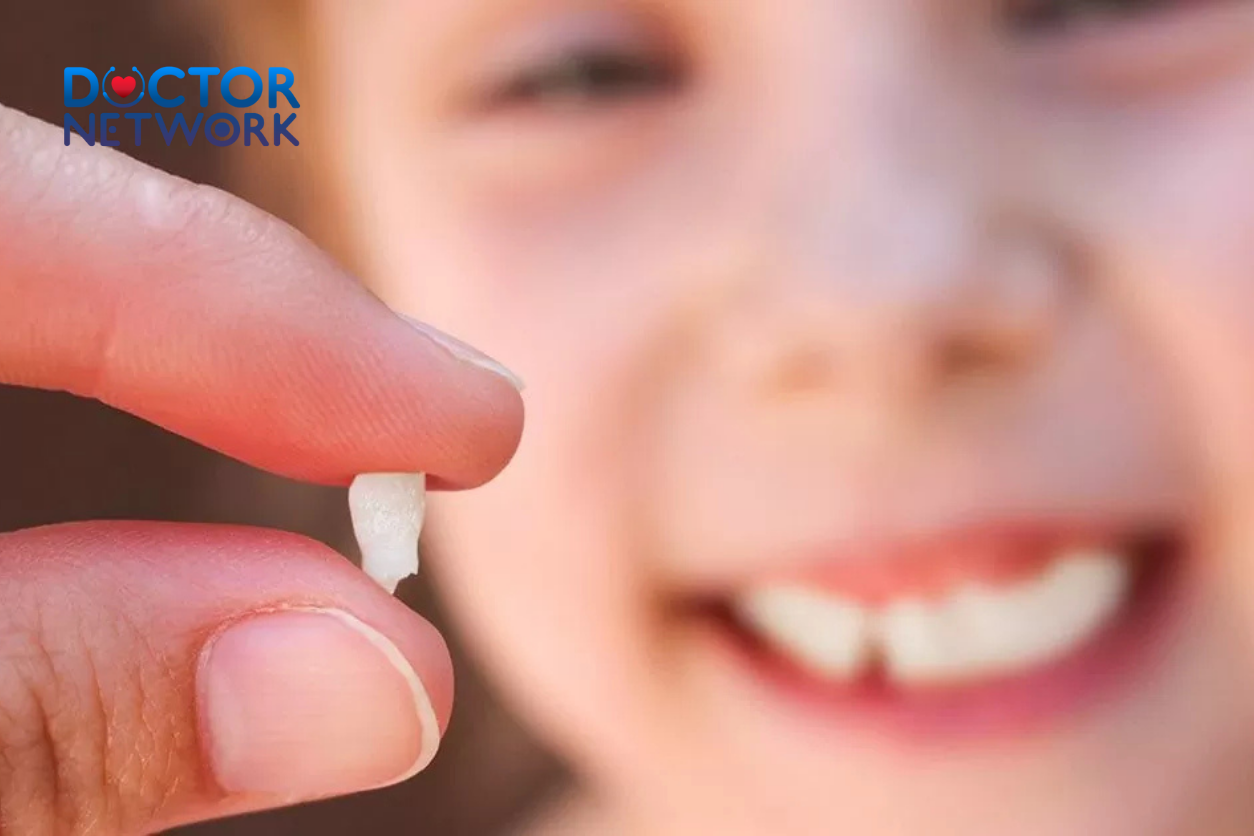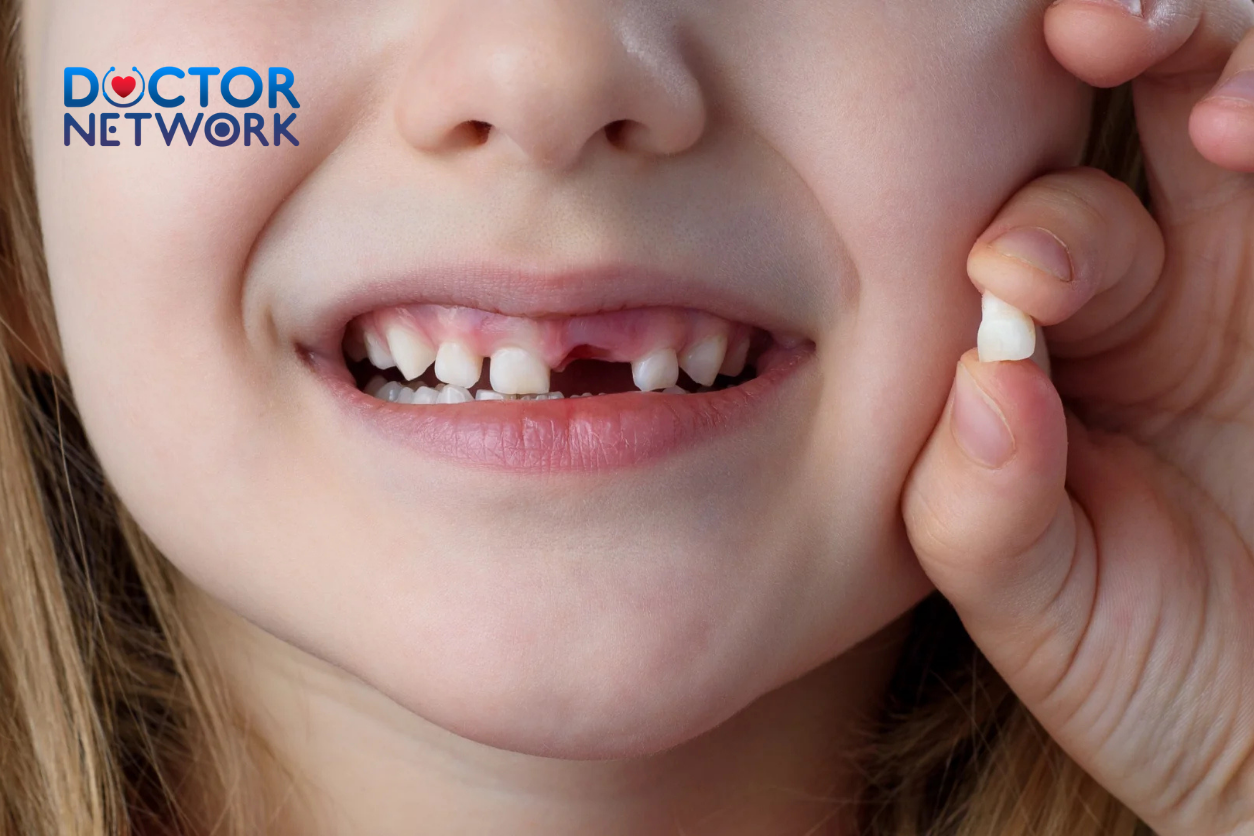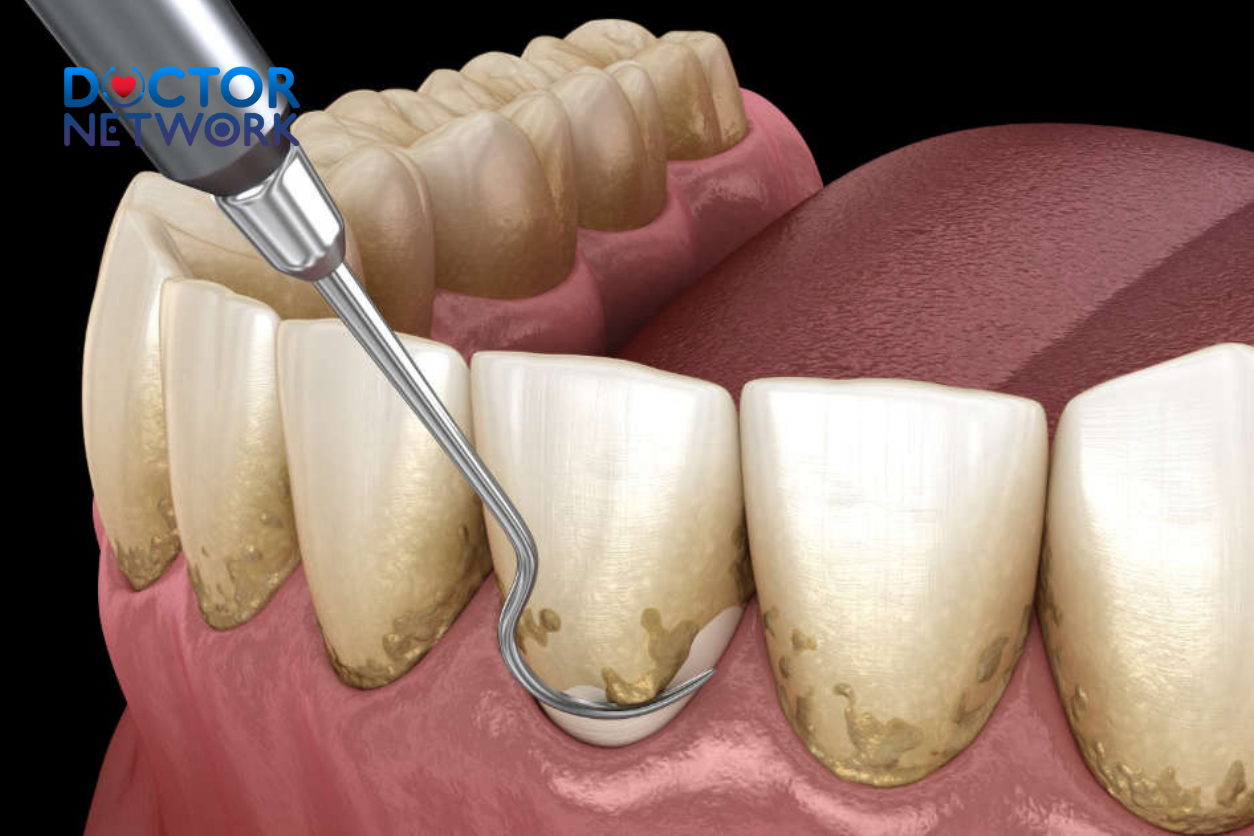How to Get a Tooth Out Fast and Painless Child – Losing baby teeth represents one of childhood’s most significant developmental milestones, marking the natural transition from primary to permanent dentition. When a child’s tooth becomes loose, parents often wonder how to facilitate safe, comfortable removal without causing trauma or discomfort. This comprehensive guide provides evidence-based techniques for gentle tooth extraction at home, emphasizing safety protocols and pain-free methods that preserve your child’s positive dental experiences.
Throughout this article, we’ll explore essential readiness indicators, gentle removal techniques, safety considerations, and professional guidance parameters. You’ll discover how to transform this potentially anxious experience into an exciting adventure while maintaining optimal oral health standards. We’ll also address common concerns about bleeding management, post-extraction care, and psychological preparation strategies that empower children throughout the process.
1. Recognizing the Right Time: Is the Tooth Truly Ready?
Determining tooth readiness prevents unnecessary pain and complications during the extraction process. A tooth should exhibit significant mobility in multiple directions before attempting any removal technique. Primary teeth naturally loosen as root resorption occurs, dissolving the connection between tooth and surrounding periodontal ligaments.

Key Readiness Indicators
Mobility Assessment Criteria:
- Tooth moves freely when touched with tongue or clean finger
- Visible gap appears between tooth and adjacent gum tissue
- Child reports minimal discomfort during gentle manipulation
- Tooth appears to “hang” rather than maintain firm attachment
Biological Readiness Signs:
- Underlying permanent tooth may be visible through gum tissue
- Root resorption has progressed sufficiently (natural biological process)
- Periodontal ligament attachment has weakened considerably
- Minimal resistance when applying gentle pressure
Warning Signs to Avoid Removal:
- Significant pain during movement attempts
- Tooth remains firmly anchored on one or more sides
- Excessive bleeding with minimal manipulation
- Child exhibits extreme anxiety or resistance
| Readiness Level | Mobility Description | Recommended Action |
|---|---|---|
| Not Ready | Slight movement only | Continue gentle wiggling exercises |
| Partially Ready | Moderate movement in one direction | Encourage natural loosening activities |
| Fully Ready | Significant movement in all directions | Safe for gentle removal techniques |
2. Gentle Wiggling: The Natural First Step
Gentle wiggling serves as the cornerstone of painless tooth removal, encouraging natural detachment through gradual tissue separation. This method empowers children to control the process while promoting comfort and confidence throughout the experience.
Effective Wiggling Techniques
Child-Led Approach: Children should use their tongue or thoroughly cleaned fingers to manipulate the loose tooth gently. This self-directed method allows them to gauge comfort levels and stop if discomfort occurs. The tongue provides natural lubrication and gentle pressure without excessive force application.
Proper Finger Positioning: When using fingers, children should grasp the tooth crown (visible portion) rather than pushing against gum tissue. Clean hands prevent bacterial introduction while proper positioning ensures effective pressure application. Parents should supervise to ensure gentle technique maintenance.
Timing Considerations: Wiggling sessions should occur multiple times daily for short durations rather than prolonged single sessions. Natural activities like eating, talking, and tooth brushing provide additional loosening opportunities without focused attention on the extraction process.
Benefits of Patient Wiggling
- Gradual tissue separation reduces discomfort
- Child maintains control over the experience
- Natural process prevents trauma to surrounding structures
- Builds confidence for future dental experiences
3. Making it Fun: Engaging Ways to Encourage Loosening & Removal
Transforming tooth removal into an enjoyable adventure reduces anxiety while promoting positive dental associations. Creative activities distract from potential discomfort while encouraging natural loosening through regular manipulation.
Creative Engagement Strategies
Entertainment-Based Methods:
- Watch favorite movies or shows while gently wiggling
- Create loose tooth progress charts with colorful stickers
- Use clean finger puppets as “tooth helpers” during wiggling sessions
- Develop special loose tooth songs or rhymes for distraction
Food-Based Loosening Activities:
- Bite into soft apples or pears (only when tooth is very loose)
- Chew corn on the cob carefully on the opposite side
- Eat crunchy vegetables like carrots with supervision
- Try soft pretzels or breadsticks for gentle pressure application
Anticipation Building:
- Prepare special tooth fairy pillows or decorative boxes
- Discuss tooth fairy traditions and expectations
- Create countdown calendars for tooth loss milestones
- Plan celebration activities for successful extraction
Fun Activity Safety Guidelines
| Activity Type | Safety Level | Age Recommendation | Supervision Required |
|---|---|---|---|
| Gentle food biting | Low risk | 5+ years | Minimal |
| Finger puppet wiggling | Very low risk | 3+ years | Optional |
| Progress chart tracking | No risk | All ages | None |
4. Ensuring a Painless Experience: Tips for Comfort
Painless tooth removal depends primarily on proper timing and gentle technique application rather than speed or force. Understanding individual pain thresholds and implementing comfort strategies creates positive experiences for children throughout the process.
Comfort Optimization Strategies
Pre-Removal Preparation: Ensure children feel relaxed and comfortable before attempting any extraction technique. Address their concerns openly and validate their feelings about the process. Create a calm environment free from distractions or time pressure.
Technique Selection: Choose methods based on tooth looseness level and child comfort preferences. Very loose teeth require minimal intervention, while moderately loose teeth benefit from patient wiggling and natural food activities. Avoid sudden movements or forceful manipulation regardless of urgency.
Pain Management Approaches:
- Apply gentle, sustained pressure rather than quick pulling motions
- Allow natural tissue separation through gradual movement
- Recognize individual pain tolerance variations among children
- Stop immediately if significant discomfort occurs
Anxiety Reduction Methods:
- Explain each step before implementation
- Allow children to participate in decision-making
- Provide constant reassurance and positive reinforcement
- Respect their requests to pause or stop the process
Understanding Pain Thresholds
Children’s pain sensitivity varies significantly based on individual factors, previous dental experiences, and emotional state. Some children tolerate manipulation well, while others require more patience and gentleness. Recognizing these differences prevents traumatic experiences and maintains trust in dental care.
5. Safe Removal Techniques at Home: Best Practices
Safe home extraction requires meticulous hygiene protocols and appropriate technique selection based on tooth looseness levels. Proper preparation prevents infection risks while gentle methods ensure comfortable experiences for children.
Hygiene Protocols
Hand Washing Requirements: Both parent and child must wash hands thoroughly with soap and warm water for at least 20 seconds before tooth contact. This prevents bacterial introduction into the extraction site and reduces infection risks. Dry hands completely with clean towels.
Oral Hygiene Preparation: Have children brush teeth gently before extraction attempts to remove food debris and bacteria from the mouth. Rinse with plain water to clear remaining particles. Avoid mouthwash immediately before extraction as it may cause tissue irritation.
Equipment Sterilization: Any tools used during extraction (gauze, cloth, string if absolutely necessary) must be clean and sterile. Prepare clean gauze pads or soft cloth pieces for bleeding control. Keep these materials easily accessible during the procedure.
Technique Selection Guidelines
For Barely Loose Teeth:
- Focus exclusively on gentle wiggling with tongue or clean fingers
- Avoid any pulling or twisting motions
- Encourage natural loosening through eating and speaking activities
- Schedule regular assessment of loosening progress
For Moderately Loose Teeth:
- Continue gentle wiggling while adding soft food activities
- Encourage tongue pressure application during eating
- Monitor for increased mobility before attempting removal
- Maintain patience as natural loosening continues
For Very Loose/Hanging Teeth:
- Single gentle twist may be sufficient for detachment
- Avoid forceful pulling even when tooth appears ready
- Have clean gauze ready for immediate bleeding control
- Celebrate successful extraction with positive reinforcement
String Method Considerations
Traditional string methods carry higher risks and should only be considered when teeth are practically detached already. If using string or dental floss, tie it carefully around the tooth crown and apply gentle, steady pressure rather than sudden jerking motions. However, gentle wiggling remains the preferred and safer approach for most situations.
6. Methods That Avoid Forceful Pulling: Embracing Gentleness
Avoiding forceful extraction techniques prevents tissue trauma, reduces pain, and maintains positive dental experiences for children. Understanding alternatives to traditional pulling methods ensures safer, more comfortable tooth removal processes.
Gentle Alternative Approaches
Progressive Loosening Strategy: Rather than attempting immediate removal, focus on gradual loosening through consistent gentle manipulation. This approach allows natural tissue separation and reduces discomfort compared to forceful extraction methods.
Pressure Application Techniques:
- Use fingertip pressure against different tooth surfaces
- Apply gentle rocking motions in multiple directions
- Encourage tongue pressure during normal activities
- Allow natural eating and speaking to provide additional loosening
Natural Detachment Methods:
- Bite into appropriate soft foods when tooth is very loose
- Use tongue to apply consistent gentle pressure
- Combine multiple gentle techniques rather than single forceful attempts
- Respect the tooth’s natural timeline for detachment
Comparison of Techniques by Tooth Looseness
- Slightly Loose: Gentle wiggling only, no removal attempts
- Moderately Loose: Wiggling plus soft food activities, continued assessment
- Very Loose: Gentle wiggling, soft food biting, possible single gentle twist
- Hanging by Thread: Any gentle method should result in natural detachment
Benefits of Gentle Approaches
Gentle methods offer superior outcomes compared to forceful techniques:
- Significantly reduced pain and discomfort
- Lower risk of gum tissue damage or tearing
- Decreased possibility of leaving root fragments
- Maintained positive associations with dental experiences
- Reduced anxiety for future tooth loss situations
7. Managing Bleeding After Removal
Minor bleeding following tooth extraction is completely normal and expected as part of the natural healing process. Proper bleeding management ensures comfort while promoting optimal healing conditions for the extraction site.
Immediate Bleeding Control
Direct Pressure Application: Have children bite down gently on clean gauze pads or soft cloth for 5-10 minutes immediately after tooth removal. This direct pressure helps blood clotting and controls bleeding effectively. Replace gauze if it becomes saturated with blood.
Positioning Considerations: Keep children upright or slightly elevated rather than lying flat, which can increase bleeding. Encourage them to breathe through their nose while applying gauze pressure. Avoid talking or moving the mouth excessively during initial bleeding control.
Normal Bleeding Expectations:
- Light bleeding for 5-15 minutes is typical
- Slight oozing may continue for several hours
- Blood mixed with saliva appears more dramatic than actual blood loss
- Complete bleeding cessation usually occurs within 30 minutes
When to Seek Professional Help
Contact a pediatric dentist or healthcare provider if:
- Bleeding continues heavily after 20 minutes of direct pressure
- Blood flow appears bright red and doesn’t slow with pressure
- Child shows signs of excessive blood loss (pale skin, dizziness)
- Bleeding resumes heavily after initial control
Bleeding Management Supplies
| Item | Purpose | Preparation Notes |
|---|---|---|
| Clean gauze pads | Direct pressure application | Keep multiple pieces ready |
| Soft clean cloth | Alternative to gauze | Ensure fabric is lint-free |
| Cold water | Rinsing mouth gently | Room temperature preferred initially |
| Ice pack | Swelling reduction if needed | Wrap in cloth, apply externally |
8. Post-Removal Care and Oral Hygiene
Proper post-extraction care promotes healing while preventing complications such as infection or excessive discomfort. Establishing appropriate oral hygiene routines ensures optimal recovery and maintains overall dental health.
Immediate Post-Extraction Care
Site Cleaning Protocols: Keep the extraction site clean through gentle rinsing with warm salt water solution. Mix half a teaspoon of salt in a glass of warm water and have children swish gently without vigorous rinsing. This promotes healing while reducing bacterial growth.
Activity Restrictions: Avoid poking the extraction site with fingers, tongue, or objects. Discourage vigorous rinsing, spitting, or drinking through straws for the first 24 hours. These activities can dislodge blood clots and delay healing processes.
Dietary Modifications: Offer soft, room-temperature foods initially to prevent irritation. Avoid hot, cold, spicy, or acidic foods that might cause discomfort. Suitable options include yogurt, applesauce, soft pasta, and lukewarm soup.
Ongoing Oral Hygiene Maintenance
Brushing Adaptations: Continue regular tooth brushing while being gentle around the extraction site. Use soft-bristled toothbrushes and avoid direct contact with the healing area. Maintain normal brushing routine for remaining teeth.
Flossing Considerations: Resume careful flossing around adjacent teeth while avoiding the extraction site. This prevents food particle accumulation and maintains gum health during healing periods.
Healing Timeline Expectations
- First 24 hours: Minor bleeding, slight discomfort, blood clot formation
- 2-3 days: Reduced sensitivity, initial tissue healing begins
- 1 week: Most discomfort resolves, eating returns to normal
- 2-3 weeks: Complete soft tissue healing in most cases
Comfort Measures
Pain Management:
- Apply ice packs to external cheek area for 10-15 minutes if swelling occurs
- Use over-the-counter children’s pain medication if recommended by healthcare providers
- Provide extra comfort and attention during initial healing period
- Monitor for signs of infection or complications
Sleep Considerations: Elevate children’s heads slightly during sleep for the first night to reduce bleeding risk. Provide extra pillows or adjust bed positioning as needed. Expect some disruption to normal sleep patterns due to unfamiliar sensations.
9. Knowing When to Consult a Dentist: Red Flags
Professional dental consultation becomes necessary when home management exceeds safe parameters or complications arise during the tooth removal process. Recognizing warning signs ensures appropriate intervention and prevents serious complications.
Immediate Professional Consultation Required
Severe Pain Indicators: Contact a pediatric dentist immediately if children experience severe, persistent pain that doesn’t respond to gentle comfort measures. Pain that worsens over time rather than improving suggests potential complications requiring professional assessment.
Excessive Bleeding Situations: Seek immediate dental care if bleeding continues heavily beyond 20 minutes of direct pressure application. Bright red bleeding that doesn’t slow with appropriate first aid measures requires professional intervention.
Infection Warning Signs:
- Significant swelling around the extraction site or face
- Redness extending beyond the immediate extraction area
- Pus or unusual discharge from the site
- Fever accompanying other symptoms
- Foul taste or odor from the extraction site
Mechanical Complications
Broken Tooth Scenarios: If the tooth breaks during removal attempts, leaving root fragments in the gum, professional extraction becomes necessary. Attempting to remove remaining pieces at home risks injury and infection.
Stuck Tooth Situations: When teeth remain firmly attached despite appearing loose, professional assessment determines appropriate intervention. Forcing removal of unready teeth can cause significant trauma.
Professional Provider Options
Pediatric Dentist Specialists: Board-certified pediatric dentists specialize in children’s dental care and anxiety management. They provide age-appropriate treatment approaches and have specialized training in child psychology related to dental procedures.
General Dentist Services: Family dentists with pediatric experience can also provide appropriate care for tooth extraction complications. Choose providers who demonstrate comfort and experience treating children.
Emergency Dental Services: For after-hours complications, emergency dental clinics provide immediate care when primary dental providers are unavailable. Keep emergency contact information readily accessible.
Questions to Ask Dental Professionals
- What caused the complication or difficulty?
- How can we prevent similar issues with future loose teeth?
- What signs should we monitor during healing?
- When should we schedule follow-up appointments?
- Are there any special care instructions for our specific situation?
10. Preparing the Child Mentally: Reducing Anxiety

Psychological preparation significantly impacts children’s experiences with tooth removal, influencing their future attitudes toward dental care. Addressing fears and building confidence creates positive associations with this natural developmental milestone.
Communication Strategies
Age-Appropriate Explanations: Explain tooth loss as a natural sign of growing up rather than something scary or painful. Use simple language that children understand while emphasizing the positive aspects of permanent teeth development.
Addressing Common Fears:
- Fear of pain: Emphasize gentle methods and child control over the process
- Fear of blood: Explain that minor bleeding is normal and temporary
- Fear of permanent damage: Reassure about natural tooth replacement
- Fear of the unknown: Describe each step before implementation
Positive Framing Techniques: Present loose teeth as exciting milestones rather than problems to solve. Focus on the adventure aspects and special traditions like tooth fairy visits. Avoid language that suggests urgency or necessity for immediate removal.
Building Child Confidence
Empowerment Strategies: Allow children to participate in decision-making about timing and methods. Let them choose which techniques to try and when to attempt removal. This control reduces anxiety and builds confidence in their ability to manage the situation.
Gradual Exposure: Start with minimal intervention and gradually increase involvement as children become comfortable. Begin with simple wiggling exercises and progress to more active techniques only when they express readiness.
Peer Support: Share stories of siblings, friends, or other children who successfully lost teeth. This normalizes the experience and provides relatable examples of positive outcomes.
Managing Extreme Anxiety
Patience Requirements: Never force anxious children to proceed with tooth removal. Anxiety can increase pain perception and create negative associations with dental experiences. Allow additional time for comfort building.
Professional Support: Consider pediatric dentist consultation for children with severe dental anxiety. These specialists have training in child psychology and anxiety management techniques.
Alternative Approaches: For extremely anxious children, focus exclusively on natural loosening methods without active removal attempts. Many teeth will fall out naturally during eating or gentle activities without specific intervention.
Celebration and Positive Reinforcement
Milestone Recognition: Celebrate successful tooth removal as a significant growing-up achievement. Create special traditions or rewards that acknowledge this developmental milestone appropriately.
Tooth Fairy Traditions: Incorporate cultural or family tooth fairy customs to build excitement about the experience. Prepare special pillows, boxes, or rituals that make losing teeth something to anticipate rather than fear.
Documentation: Take photos or create memory books documenting the loose tooth journey. This creates positive memories and helps children feel proud of their achievement.
Conclusion – How to Get a Tooth Out Fast and Painless Child
Successfully removing a child’s loose tooth requires patience, gentleness, and attention to readiness indicators rather than speed or force. The key principles include waiting until teeth are truly ready for removal, employing gentle wiggling techniques, and prioritizing painless, safe methods that preserve positive dental experiences.
Most children experience tooth loss as a natural, manageable milestone when approached with appropriate techniques and psychological preparation. Gentle methods consistently produce superior outcomes compared to forceful extraction attempts, reducing pain while maintaining tissue integrity and child confidence.
When uncertainty exists about timing, technique, or complications, consultation with pediatric dentists ensures professional guidance tailored to individual situations. These specialists provide expertise in both technical extraction procedures and child anxiety management.
Remember that every loose tooth represents an exciting step in your child’s development. By following evidence-based techniques and maintaining focus on comfort and safety, you can transform this experience into a positive memory that builds confidence for future dental care. Celebrate this milestone with your child while establishing foundations for lifelong oral health success.
5 frequently asked questions
1. Can wisdom teeth grow back after they’ve been removed?
No, wisdom teeth do not grow back after they have been completely removed. The entire tooth, including the root, is extracted during surgery, which prevents any regrowth.
2. Why do some people think their wisdom teeth have grown back?
Sometimes, what appears to be regrowth is actually the eruption of extra teeth called supernumerary teeth. These are additional teeth beyond the usual four wisdom teeth, present in about 2% of people. They can erupt after the original wisdom teeth have been removed but are not true regrowth.
3. Can incomplete extraction cause wisdom teeth to “grow back”?
If a small root fragment is left behind after extraction, it may cause a painful cyst or a tooth-like structure to develop. This is not a new tooth growing but a complication that sometimes requires further treatment.
4. Why are wisdom teeth often removed?
Wisdom teeth are frequently removed because they often do not have enough space to erupt properly, leading to impaction, crowding, pain, infection, or damage to adjacent teeth. They can also be difficult to clean, increasing the risk of decay and gum disease.
5. Can wisdom teeth grow back years later after removal?
No, once wisdom teeth are extracted, they will not grow back later in life. There is no possibility of regrowth in adulthood as adult teeth do not regenerate after removal.
In summary, wisdom teeth do not regrow after extraction. Occasional appearances of extra teeth are due to supernumerary teeth, not true regrowth. Complete removal including roots is key to preventing any recurrence.
References
Incomplete Removal of the Original Tooth:
Explanation: If a small fragment of the wisdom tooth root or a portion of the crown was unintentionally left behind during the extraction, this fragment might later erupt further through the gums or cause inflammation, giving the impression of “regrowth.” This is not a new tooth forming, but rather a remnant of the original tooth becoming apparent.
Evidence Type: Oral surgery textbooks and articles on complications of third molar (wisdom tooth) surgery discuss retained root fragments.
Example Source (Conceptual – as specific case reports are numerous but this is a known complication):
Authors/Source: General knowledge in oral and maxillofacial surgery literature. For example, chapters on “Complications of Third Molar Surgery” in textbooks like “Peterson’s Principles of Oral and Maxillofacial Surgery” or articles in journals.
Study Example (illustrative of complications):
Title: “Complications of third molar surgery.”
Authors: Bouloux, G. F., Steed, M. B., & Perciaccante, V. J.
Source: Oral and Maxillofacial Surgery Clinics of North America, 2007.
Link (Abstract): https://www.omfs.theclinics.com/article/S1042-3699(06)00134-9/abstract
DOI: 10.1016/j.coms.2006.11.013
(This article discusses various complications, among which retained roots or fragments would be considered.)
Presence of a Supernumerary Tooth (Fourth Molar):
Explanation: Some individuals develop extra teeth beyond the usual number. An extra molar behind the wisdom tooth is called a “fourth molar” or a distomolar. If a wisdom tooth (third molar) is removed, and a previously unnoticed and unerupted fourth molar later erupts, it could be mistaken for the wisdom tooth “growing back.” This is a separate, distinct tooth.
Evidence Type: Studies on the prevalence and characteristics of supernumerary molars.
Study Example 1:
Title: “Prevalence and characteristics of fourth molars in a Turkish patient population.”
Authors: Kaya, E., Güngör, K., Demirel, O., & Çene, E.
Source: Oral Radiology, 2018.
Link (Abstract): https://link.springer.com/article/10.1007/s11282-018-0321-5
DOI: 10.1007/s11282-018-0321-5
Study Example 2:
Title: “Prevalence and characteristics of fourth molars in an Italian population.”
Authors: Cassetta, M., Altieri, F., Di Mambro, A., Galluccio, G., & Barbato, E.
Source: Journal of Investigative and Clinical Dentistry, 2014.
Link (PubMed): https://pubmed.ncbi.nlm.nih.gov/23640865/
DOI: 10.1111/jicd.12030
Delayed Eruption of an Existing Wisdom Tooth That Was Thought To Be Absent or Was Only Partially Erupted:
Explanation: Sometimes, a wisdom tooth may be deeply impacted or slow to erupt. If it wasn’t clearly visible on previous X-rays or was only partially erupted and then seemed to “disappear” under the gums, its later full eruption (if not extracted) could be misinterpreted as regrowth, especially if another tooth was mistakenly identified and removed as the wisdom tooth. Proper diagnosis with panoramic X-rays is crucial.
Evidence Type: Literature on impacted teeth and eruption patterns.
Source: This is based on general dental knowledge and patterns of tooth eruption and impaction described in dental anatomy and oral surgery textbooks.
Example (General text, not a specific study on “misinterpretation”): “Contemporary Oral and Maxillofacial Surgery” by Hupp, Ellis, and Tucker would cover eruption patterns and impaction extensively. Finding a specific study on “misinterpreting delayed eruption as regrowth” is unlikely as it’s a diagnostic/perception issue.
A Nearby Tooth Shifting into the Space:
Explanation: While not “regrowth,” if a wisdom tooth is removed, sometimes the second molar (the tooth in front of it) can slightly drift or tilt into the extraction space over time. This is tooth movement, not new tooth formation.
Evidence Type: Orthodontic and general dentistry principles of tooth movement.
Kiểm Duyệt Nội Dung
More than 10 years of marketing communications experience in the medical and health field.
Successfully deployed marketing communication activities, content development and social networking channels for hospital partners, clinics, doctors and medical professionals across the country.
More than 6 years of experience in organizing and producing leading prestigious medical programs in Vietnam, in collaboration with Ho Chi Minh City Television (HTV). Typical programs include Nhật Ký Blouse Trắng, Bác Sĩ Nói Gì, Alo Bác Sĩ Nghe, Nhật Ký Hạnh Phúc, Vui Khỏe Cùng Con, Bác Sỹ Mẹ, v.v.
Comprehensive cooperation with hundreds of hospitals and clinics, thousands of doctors and medical experts to join hands in building a medical content and service platform on the Doctor Network application.

























